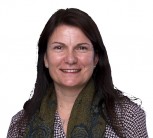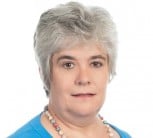With climate change said to be affecting the intensity of rainfall, experts at the University of Pretoria (UP) have investigated if there are observable changes in the probability of significant to extreme daily rainfall across South Africa.
This research is especially relevant, as many areas in the country are prone to localised flooding. UP researchers found that the amount of rainfall in certain parts of South Africa have increased or become more extreme over the past 50 years or so.
These investigations were part of a study led by Charlotte McBride of the South African Weather Service and a PhD candidate in UP’s Department of Geography, Geoinformatics and Meteorology.
McBride explains that one of the consequences of human-induced climate change is the increase in frequency and/or intensity of some weather and climate extremes. These can include heatwaves, heavy rainfall, floods, droughts and tropical cyclones.
“South Africa is currently focused on flooding, as this is what is happening at the moment,” she says. “However, during 2018 and the Day Zero debate – when Cape Town was set to run out of water – the public’s attention was focused on drought. South Africa has a variable climate, with droughts and floods a common feature of this variability.”
As surface temperatures increase due to climate change, so the water content of the atmosphere changes. These increases in the water-holding capacity of the atmosphere equate to about 7% per degree of warming.
With more moisture available, the nature of rainfall events is likely to become more intense with increased rainfall rates. However, changes in extreme rainfall patterns are thought to be highly regionalised.
South Africa’s annual rainfall distribution is diverse, and increases from below 200mm in the west to above 1 200mm a year in the east. To investigate if rainfall patterns are changing, the researchers analysed the daily time series of 70 manual rainfall stations between 1921 and 2020; this was divided into an early sub-period (1921 to 1970) and a later period (1971 to 2020). After comparing the rainfall figures in these two periods, it became evident that most rainfall stations showed an increase in their 1 – 50- and 1 – 100-year return period values.
The two periods had more or less the same number of rain days (more than 1mm), but the rainfall amounts on any given rain day for certain parts of the country increased or became more extreme in the latter period.
“We then mapped the change between the two periods as a ratio for each station,” McBride explains. “This gave us an idea of where areas are experiencing higher or lower rainfall values for the specific return periods.”
Some stations over the eastern parts showed increases of more than 100mm in the later period compared to the early period, when considering the 1 – 50- and 1 – 100-year return period values. For example, the Letaba district rainfall station in Limpopo experienced an increase more than 35%. Another example is Hlobane in KwaZulu-Natal, where the 1 – 50- and 1–100-year values have essentially doubled.
This means that these areas and others highlighted in the research, such as the western interior and southern parts of the country, are likely to experience more extreme rainfall, which is probably a “feature of climate change over those areas”.
With reference to the blue areas in maps A (1 – 50-year return period) and B (1 – 100-year return period), a figure greater than 1.5, for example, indicates an increase in the return period value of about 50% or more.
“South Africa is projected to become warmer and thus experience an increase in the occurrence of droughts,” McBride says. “However, this does not mean that the risk of severe storms – including tropical cyclones and intense thunderstorms – will not be expected to occur. With the atmosphere heating, it can hold more water vapour. More water vapour means more rainfall. So we can expect the intensity of rainfall to increase.”
“There is a lot of work being done internationally and in South Africa on climate change using Numerical Weather Prediction data,” says Professor Liesl Dyson, Associate Professor in Meteorology at UP.
While these products are of great value and provide insight into what could happen in a future climate, they remain proxies of reality.
“The value of the presented research is that it uses real, observed data of rainfall over South Africa for an extended period,” she adds. “These results are based on what we know has happened over the past century, and show that in general, rainfall extremes are becoming more probable and therefore increasing in South Africa. Researchers who are using Numerical Weather Prediction data could also make use of these results to verify that the models they employ capture the current situation accurately, thereby placing a higher value on the reliability of projections in the future.”



Figure 1: The value for the second period was divided by the first to produce the difference as a ratio between the 1 – 50-year return period (A) and 1 – 100-year return period (B). The blue areas indicate where the return period values have become much greater over the analysis period (1921 – 2020). Brown areas show slight decreases. Source: Weather and Climate Extremes
Click on the infographic in the sidebar for more information.
Source: Weather and Climate Extremes
Charlotte McBride and Prof Liesl Dyson
May 16, 2023

Charlotte McBride is a PhD candidate at the University of Pretoria (UP), where she has been doing research for the past three years. She completed her undergraduate studies at the University of KwaZulu-Natal.
Her field of research contributes to the betterment of the world because it is vital for planning. According to McBride, understanding regional and local weather and climate extremes is key for planning purposes in sectors such as agriculture, health, disaster management and the built environment. This will give experts an idea of changes in the extent and frequency of extreme weather and climate phenomena.
“Such estimations would assist in the spatial allocation of resources to mitigate specific weather and climate hazards,” she says. “Similar analyses of possible future extreme climate scenarios are imperative to mitigate and adapt to climate-related disasters that are the result of climate change.”
In addition to her research duties, McBride also works at the South African Weather Service (SAWS), where she ensures that SAWS has quality, fit-for-purpose climate datasets that can be used for research. McBride says it is the work of the World Meteorological Organisation and the creation of an open-source climate data management system that is important if we are to manage weather and climate data effectively.
She says that her research matters because the more we know about the effects of climate change, the more we can plan for and hopefully adjust our behaviour to mitigate against the negative changes.
McBride is inspired in her research by world-renowned primatologist and anthropologist Dr Jane Goodall. In her book Reason for Hope, Dr Goodall emphasised that we look for ways to make the world a better place.
“As scientists, this should be our focus,” McBride says. “This should enable us to understand our world with the view to making it a better place to live and thrive in, and to ensure that we manage our natural resources with future generations in mind. I had the privilege of meeting this wonderful researcher in South Africa when she spoke at the National Science Festival in Makhanda [formerly Grahamstown] many years ago.”
McBride advises school learners or undergraduates who are interested in her field to find something that they are passionate about, to seek out people in that field to talk to and to job-shadow.
“Such interactions can confirm or lead you to discover other avenues of work that will be more enjoyable and exciting to participate in,” she says.
McBride is currently focused on getting her PhD. Once she has done that, she says she will focus on the next step. In her spare time, she enjoys bird-watching and spending time in nature.

Professor Liesl Dyson studied Meteorology at the University of Pretoria (UP), which is the only university in South Africa that offers a degree in Meteorology that complies with the World Meteorology Organisation’s training standards. Prof Dyson has been doing research at UP for 25 years, and says “the beauty of clouds inspired me to study meteorology”.
As an associate professor in Meteorology in the Department of Geography, Geoinformatics and Meteorology, research is part of what she does. The research that she and her students are involved in deals with understanding the character of severe weather phenomena, investigating the development mechanisms of these phenomena and finding ways to better predict these events. As for how her research contributes to the betterment of the world, she says that timeous warnings of severe weather could save lives and property.
Many of the postgraduate students who do research under her supervision are employed at the South African Weather Service.
“Together, we identify which weather phenomena needs further investigation, then set about improving the understanding and forecasting of these,” Prof Dyson explains. “At the moment, there is special emphasis on severe thunderstorms. We investigate thunderstorms by using radar and state-of-the-art numerical weather prediction products. However, other phenomena such as sand/dust storms and snow are also included in our research.”
Prof Dyson collaborates with the Natural Hazard Centre, which statistically analyses the hail data she generates by using numerical weather prediction data and a hail model. The result of this collaboration determines the risk of hail over South Africa.
A highlight for her was being awarded the Water Research Commission’s Knowledge Tree Innovation Award in 2019 for a project entitled ‘The impact of the predictability of continental tropical lows on hydrological modelling: Current state and future projections’. This award celebrates outstanding design, process and product development of innovative technologies. The research investigated and named a specific type of tropical weather system over southern Africa, which they called Africánes. The system is a tropical cyclone-like low-pressure system that develops over Africa and causes very heavy rainfall over the sub-continent.
Two of the master’s students working under her supervision received the prestigious Society of South African Geographers Master’s Bronze Medal, which is awarded to the best geography MSc completed by research dissertation within a given year in South Africa. Christina Liesker received the award in 2022 for her work on supercell identification using weather radar and Markus Geldenhuys in 2019 for his work on the dangerous mountain wave phenomena over the Eastern Cape.
Prof Dyson’s role model in meteorology is Dr Jan Taljaard.
“I had the privilege of working with him for a short while when I was a young forecaster at the South African Weather Bureau. I admire him so much because he was an expert in real weather. It was all about what was going on outside and he instilled in me a hunger to do the same. He authored several papers about synoptic circulation over South Africa, and even though he has long since passed away, these documents are still my go-to papers when I do my own research. I discover new insights every now and again.”
Prof Dyson hopes to play a small part in helping weather forecasters in South Africa to be enthusiastic about the weather, be excellent in their jobs and have the knowledge through training and research to issue forecasts of high quality.
Research shows that in a changing climate, severe weather events are increasing. On short time scales, weather forecasters are responsible for issuing warnings for these events. Prof Dyson’s research matters because it aims to help forecasters to issue such warnings.
She says many young people are interested in the weather because they see and experience the effect of climate change and want to get involved in helping to address arising issues. Others are simply fascinated by tropical cyclones (hurricanes) and tornadoes, and by clouds. She advises school learners that in order to study meteorology, they need to take mathematics and natural science as subjects at school.
“We use Newton’s second law and the laws of thermodynamics to model the atmosphere, and learners need the mathematical tools to do that.”
Prof Dyson loves gardening in her spare time and enjoys outdoors activities with her dogs.
 Story
Story
University of Pretoria (UP) researchers have found that the antioxidant content of certain types of tea can be likened to that found in recommended portions of fruit and vegetables.
 Infographic
Infographic
Half a cup of black tea, oolong tea or green tea contained the same amount of antioxidants with radical scavenging capabilities (RSC) as that of a 200mg vitamin C tablet.
 Story
Story
The latest issue of the University of Pretoria’s award-winning RE.SEARCH magazine is available now and reflects a shift towards both a fresher design and outlook. This edition is curated under the theme ‘Digital’, and offers a glimpse into some of the fascinating research we’re doing at UP to drive digital leadership and innovation.
Copyright © University of Pretoria 2025. All rights reserved.
Get Social With Us
Download the UP Mobile App